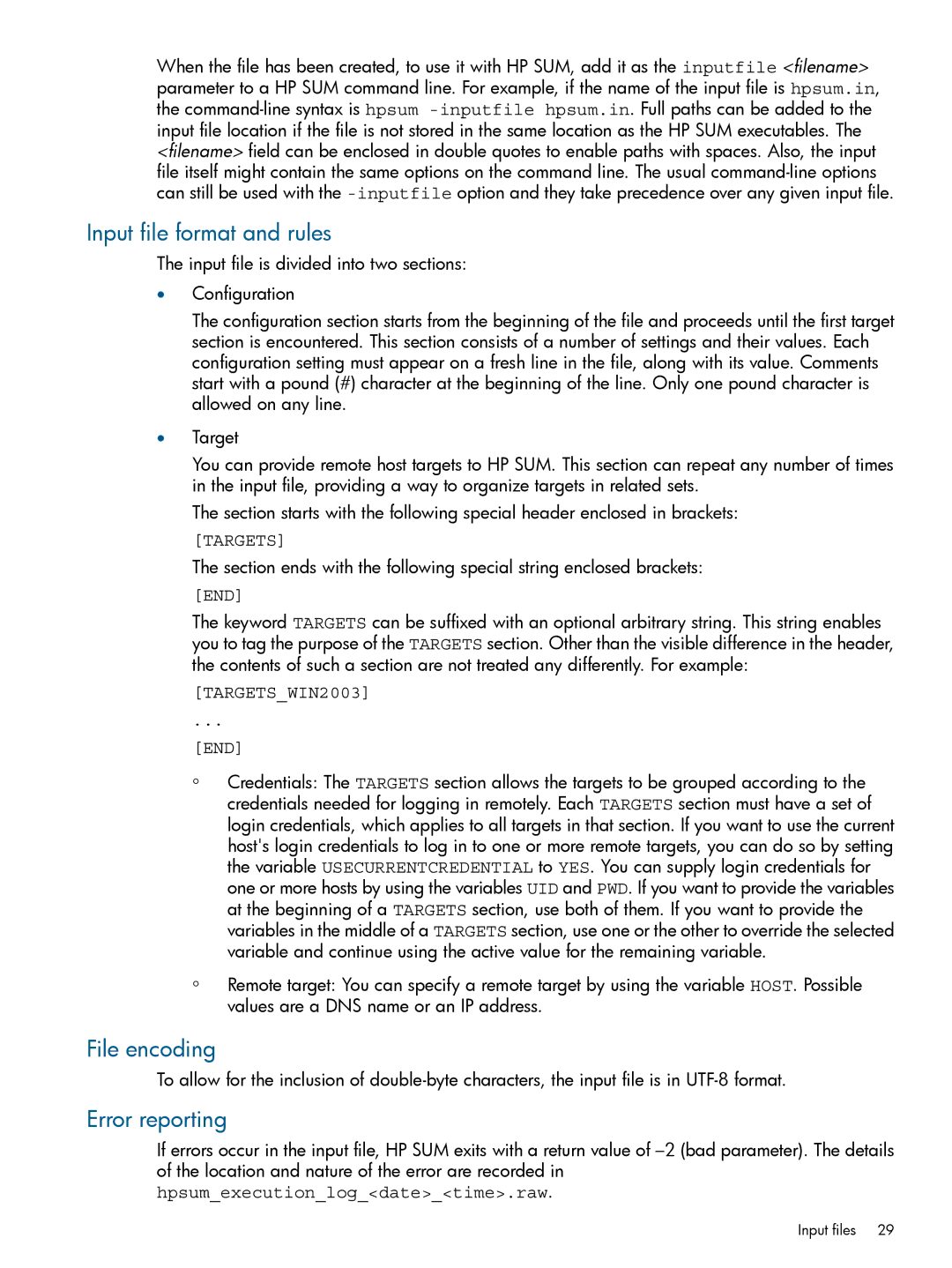When the file has been created, to use it with HP SUM, add it as the inputfile <filename> parameter to a HP SUM command line. For example, if the name of the input file is hpsum.in, the
Input file format and rules
The input file is divided into two sections:
•Configuration
The configuration section starts from the beginning of the file and proceeds until the first target section is encountered. This section consists of a number of settings and their values. Each configuration setting must appear on a fresh line in the file, along with its value. Comments start with a pound (#) character at the beginning of the line. Only one pound character is allowed on any line.
•Target
You can provide remote host targets to HP SUM. This section can repeat any number of times in the input file, providing a way to organize targets in related sets.
The section starts with the following special header enclosed in brackets:
[TARGETS]
The section ends with the following special string enclosed brackets:
[END]
The keyword TARGETS can be suffixed with an optional arbitrary string. This string enables you to tag the purpose of the TARGETS section. Other than the visible difference in the header, the contents of such a section are not treated any differently. For example:
[TARGETS_WIN2003]
...
[END]
◦Credentials: The TARGETS section allows the targets to be grouped according to the credentials needed for logging in remotely. Each TARGETS section must have a set of login credentials, which applies to all targets in that section. If you want to use the current host's login credentials to log in to one or more remote targets, you can do so by setting the variable USECURRENTCREDENTIAL to YES. You can supply login credentials for one or more hosts by using the variables UID and PWD. If you want to provide the variables at the beginning of a TARGETS section, use both of them. If you want to provide the variables in the middle of a TARGETS section, use one or the other to override the selected variable and continue using the active value for the remaining variable.
◦
File encoding
Remote target: You can specify a remote target by using the variable HOST. Possible values are a DNS name or an IP address.
To allow for the inclusion of
Error reporting
If errors occur in the input file, HP SUM exits with a return value of
